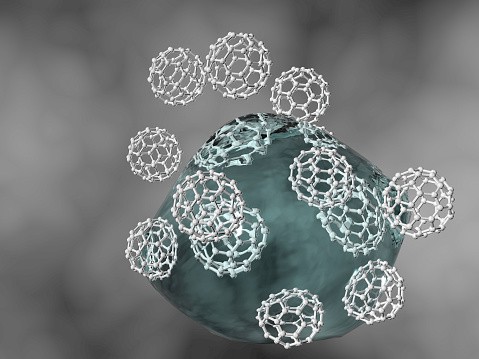Analysis of Systems Containing Cyclodextrins
Cyclodextrin (CD) complexation is a widely used method for improving the water solubility of drug molecules to enhance the delivery of oral, ophthalmic and dermatological drug delivery. The general method based on SSNMR can directly prove the drug inclusion in CD. This method uses a small number of solid samples and does not need to use reference materials.

As an expert in the field of nuclear magnetic resonance, based on 1H NMR, 13C NMR and 2D NMR, Creative Biostructure provides customers with quantitative analysis of drugs in solid complexes and the interaction between API and CD.
Our Principles
We have established a system to study the interaction of inclusion complexes by NMR technology. The method of measuring T1 (spin-lattice relaxation time) in the relaxation experiment is used to determine the binding site of the guest in the host cavity. In addition, we also use the 2D NOESY experiment to calculate the intermolecular distance of the host in the cavity, so that we can understand the information of the guest in the cavity from the microscopic atomic level.
1H Spectral Analysis Service
Hydrogen spectroscopy is the simplest and most effective method to confirm the formation of inclusion complex in solution. We use 1H spectrum to detect the influence of the change in the chemical environment of hydrogen atom in organic matter on hydrogen atom.
When guest molecules enter the CD cavity, the chemical shifts of H-3 and H-5 of CD can be induced to change. Therefore, H-3 and H-5 can be used as spectral probes to study the existence of guest molecules and host-guest interactions.
The stoichiometric ratio of inclusion complex can be determined by plotting the molar ratio of guest/host with the chemical shift change ab of H-3 and H-5 on Δδ.
2D SSNMR Analysis Service
The 2D SSNMR experiment directly detects the interaction between specific NMR active nuclei and CD molecules in the drug and also provides more detailed structural information about the complex.
We can introduce 2D technology involving 1H, 13C, 19F and 31P nuclei into a wide range of binary and tertiary drug CD complexes to prove that drugs are contained in the CD cavity, and evaluate the applicability of these compounds as drug delivery systems (DDS).
Two-dimensional solid-state nuclear magnetic resonance (SSNMR) technology is used to detect the interaction between drug and CD in a solid complex through the dipole interaction between drug nucleus and CD molecule. SSNMR was used for quantitative analysis of the container and free drug components in the solid drug-CD complex.
Among all spectral methods, 2D-1H NMR can provide valuable information on the geometry of CD structure, the orientation of guest in the cavity, and the formation and dissociation dynamics of inclusion complex in solvent. Especially for those molecules without chromophores and fluorescent groups, recognition is an important means. H-3 and H-5 are the atoms that form the inner wall of the CD cavity. When the guest molecules enter the cavity, the guest molecules induce H-3 and H-5 proton resonance to shift to prove the formation of the inclusion complex. 2D-1H NMR is used to reflect the degree of host-guest intermolecular proximity and binding strength.
Applications of Our Technology
- Prove that the drug has been successfully included in the CD cavity.
- Evaluate the suitability of CD compounds as drug delivery systems (DDS).
- Detect the interaction between drug and CD in solid complex.
- Quantitative analysis of drugs in CD cavity.
- Quantitative analysis of free drug components.
Creative Biostructure is committed to providing high-quality NMR analysis services to advance the life sciences fields. If you have any questions or needs, please contact us and our customer service staff will help you the first time.
Ordering Process
